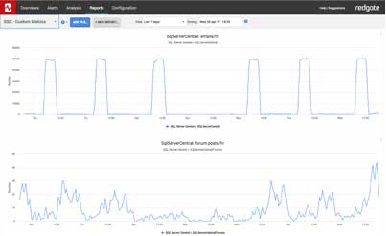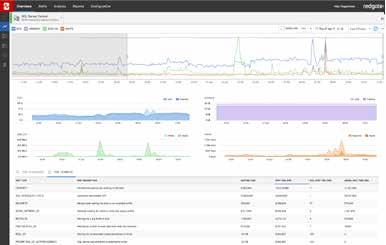Metrics install automatically if you have Redgate Monitor installed.
If you are using Redgate’s SQL Server monitoring tool, Redgate Monitor, you can instantly install and run this metric on your servers.
Uses Server and database audit to track SELECT statements.
First Create a Server audit:
|
1 2 3 4 5 6 7 8 9 10 11 12 13 14 |
CREATE SERVER AUDIT [Audit_Select_Statement] TO FILE ( FILEPATH = N'c:\Log\' ,MAXSIZE = 0 MB ,MAX_ROLLOVER_FILES = 2147483647 ,RESERVE_DISK_SPACE = OFF ) WITH ( QUEUE_DELAY = 1000 ,ON_FAILURE = CONTINUE ) ALTER SERVER AUDIT [Audit_Select_Statement] WITH (STATE = ON) GO |
Then a database specific Audit based on this server audit: (in this case on the Database: WideworldImporters, schema “Sales” and table: “Customers”
|
1 2 3 4 5 6 7 8 9 10 11 12 13 14 15 16 17 18 19 20 21 |
USE [WideWorldImporters] GO IF EXISTS ( SELECT * FROM sys.database_audit_specifications WHERE name = 'SELECT_Statement_Classified_Table' ) BEGIN ALTER DATABASE AUDIT SPECIFICATION [SELECT_Statement_Classified_Table] WITH (STATE = OFF) DROP DATABASE AUDIT SPECIFICATION [SELECT_Statement_Classified_Table] END CREATE DATABASE AUDIT SPECIFICATION [SELECT_Statement_Classified_Table] FOR SERVER AUDIT [Audit_Select_Statement] ADD ( SELECT ON OBJECT::[Sales].[Customers] BY [public] ) WITH (STATE = ON) GO |
Then setup the custom metric:
Metric definition
Name
SELECT Statement executed against Classified table
Description
Uses Server and database audit to track SELECT statements
The T-SQL query that will collect data
Instances to collect from
Select all
Databases to collect from
Select all
Collection frequency
60
Use collected or calculated values
Leave the Use a calculated rate of change between collections check box unchecked
Metric collection
Enabled
Alert definition
You could add an alert once the baseline for your environment has been established.
 4,568
4,568 
